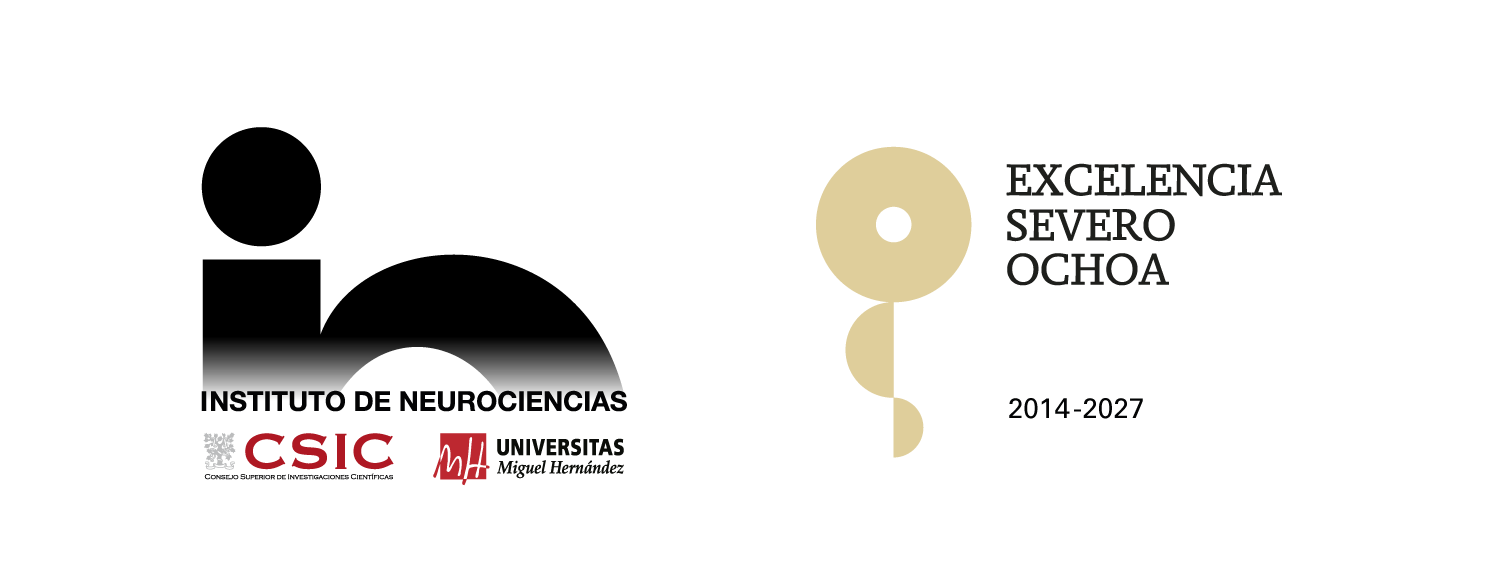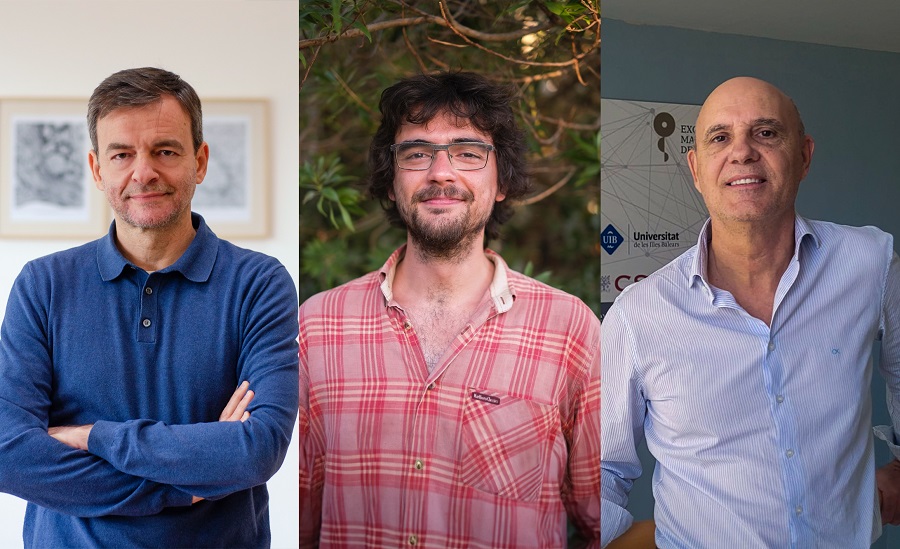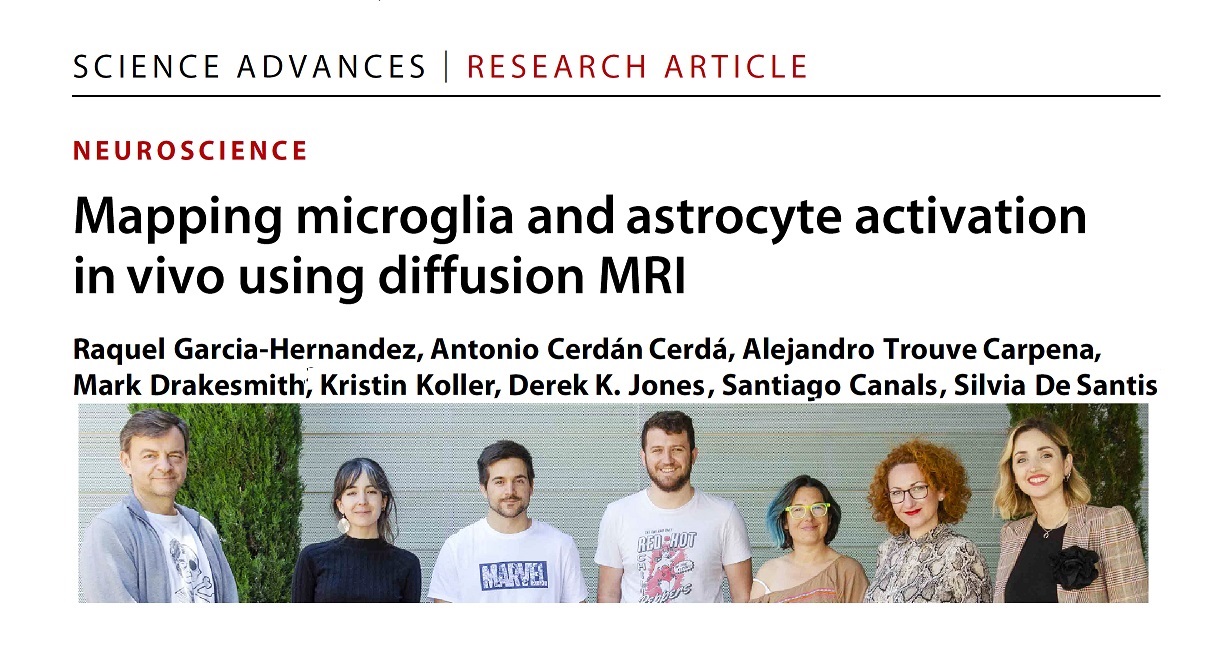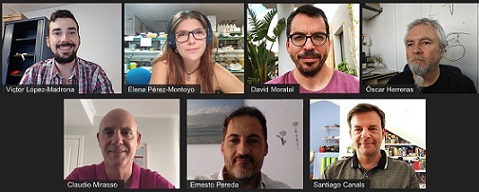Lines of investigation
How are memories encoded, stored and retrieved in our brains?
Experience-dependent modulations of synaptic strength shape the functional structure of the brain, recruiting relevant networks in a particular context and supporting behavioural adaptation. Little is known, however, about how synapse dynamics are transformed into network dynamics. The work of our lab has demonstrated that brain circuits involved in learning and memory are functionally reorganized after local potentiation of synaptic transmission in the hippocampus. We are currently investigating the mechanisms underlying this network reorganization, focusing on short- and long-term synaptic plasticity and the excitatory/inhibitory balance in specific brain regions. In doing so, we study the mechanism that govern information routing in the complex network of parallel and highly distributed connections implemented in the brain. We use different animal models and combine functional magnetic resonance imaging (fMRI) with electrophysiological recordings, electric or optogenetic stimulations of targeted regions, and behavioural testing.
The same cellular mechanisms that mediate experience-dependent neuroplasticity and allow learning from, and react to, changes in the environment can also be activated by drugs of abuse. Human and animal studies indicate that the refractory nature of addiction results from drug-induced stimulation of reward-related learning networks. As a consequence, drug seeking behaviour becomes hard-wired in the addict’s brain. By applying the same multidisciplinary approach, we are investigating the functional reorganization of brain networks supporting addiction and relapse.
Representative Publications
- The role of feedforward and feedback inhibition in modulating theta-gamma cross-frequency interactions in neural circuits. Chalkiadakis D, Sánchez-Claros J, López-Madrona VJ, Canals S and Mirasso CR. PLoS Computational Biology. 2025 21(8): e1013363 https://doi.org/10.1371/journal.pcbi.1013363
- NAc-DBS selectively enhances memory updating without effect on retrieval. Andrés Pérez-Segura, Jorge Medina, Antonio Cerdán Cerdá, Cristina Sánchez-Ferri, Daniel Torres, Claudio R. Mirasso, Bryan Strange, Víctor M. Eguíluz, Lucas Lacasa & Santiago Canals. Neuropsychopharmacology. 2025 50: 1420–1429 https://doi.org/10.1038/s41386-025-02132-0
- Protocol to study brain dynamics of mammals through the hierarchy of complex correlation patterns defining a robust functional architecture. Levente Varga , Balázs Péntek, Botond Molnár , Laura Perez-Cervera , Mohamed Kotb Selim , Antonio Díaz-Parra , David Moratal, Wolfgang H. Sommer, Santiago Canals , Raul C. Mureșan, Vasile V. Moca3 , Maria Ercsey-Ravasz. Protocol. 2025 6(2): art. number 103693 https://doi.org/10.1016/j.xpro.2025.103693
- Alcohol-Induced Changes in Brain Microstructure: Uncovering Novel Pathophysiological Mechanisms of AUD Using Translational DTI in Humans and Rodents. Wolfgang H Sommer , Santiago Canals. Curr Top Behav Neurosci. 2025 72: 595-617 https://doi.org/10.1007/7854_2025_585
- Brain dynamics supported by a hierarchy of complex correlation patterns defining a robust functional architecture. Varga L, Moca VV, Molnár B, Perez-Cervera L, Selim MK, Díaz-Parra A, Moratal D, Péntek B, Sommer WH, Muresan RC, Canals S and Ercsey-Ravasz M. Cell Systems. 2024 15(8), 770-786.e5. https://doi.org/10.1016/j.cels.2024.07.003
- Influence of temporal information gaps on decision making: describing the dynamics of working memory. Sospedra A, Canals S, Marcos E. bioRxiv. 2024 in press https://doi.org/10.1101/2024.07.17.603868
- Alcohol-induced damage to the fimbria/fornix reduces hippocampal-prefrontal cortex connection during early abstinence. Pérez-Cervera L, De Santis S, Marcos E, Ghorbanzad-Ghaziany Z, Trouvé-Carpena A, Kotb Selim M, Pérez-Ramírez U, Pfarr S, Bach P, Halli P, Kiefer F, Moratal D, Kirsch P, Sommer W.H & Canals S. Acta Neuropathol Commun. 2023 11, art. nº 101 ( junio 2023) https://doi.org/10.1186/s40478-023-01597-8
- Mapping microglia and astrocyte activation in vivo using diffusion MRI Raquel Garcia-Hernandez, Antonio Cerdán Cerdá, Alejandro Trouve Carpena , Mark Drakesmith2, Kristin Koller, Derek K Jones , Santiago Canals , Silvia De Santis Sci Adv. 2022 8(21):eabq2923 https://doi.org/10.1126/sciadv.abq2923
- Nootropic effects of LSD: Behavioral, molecular and computational evidence. Ornelas, I.M., Cini, F.A., Wießner, I., Marcos, E., Araújo, D.B., Goto-Silva, L., Nascimento, J., Silva, S.R.B., Costa, M.N., Falchi, M., Olivieri, R., Palhano-Fontes, F., Sequerra, E., Martins-de-Souza, D., Feilding, A., Rennó-Costa, C., Tófoli, L.F., Rehen, S.K., Ribeiro, S. Exp Neurol. 2022 356: art. 114148 https://doi.org/10.1016/j.expneurol.2022.114148
- Different theta frameworks coexist in the rat hippocampus and are coordinated during memory-guided and novelty tasks López-Madrona VJ, Pérez-Montoyo E, Álvarez-Salvado E, Moratal D, Herreras O, Pereda E, Mirasso CR, Canals S eLife 2020 9:e57313 https://doi.org/10.7554/eLife.57313
- Alcohol-Induced Changes in Brain Microstructure: Uncovering Novel Pathophysiological Mechanisms of AUD Using Translational DTI in Humans and Rodents. Wolfgang H Sommer , Santiago Canals. Curr Top Behav Neurosci. 2025 72: 595-617 https://doi.org/10.1007/7854_2025_585
- Protocol to study brain dynamics of mammals through the hierarchy of complex correlation patterns defining a robust functional architecture. Levente Varga , Balázs Péntek, Botond Molnár , Laura Perez-Cervera , Mohamed Kotb Selim , Antonio Díaz-Parra , David Moratal, Wolfgang H. Sommer, Santiago Canals , Raul C. Mureșan, Vasile V. Moca3 , Maria Ercsey-Ravasz. Protocol. 2025 6(2): art. number 103693 https://doi.org/10.1016/j.xpro.2025.103693
- NAc-DBS selectively enhances memory updating without effect on retrieval. Andrés Pérez-Segura, Jorge Medina, Antonio Cerdán Cerdá, Cristina Sánchez-Ferri, Daniel Torres, Claudio R. Mirasso, Bryan Strange, Víctor M. Eguíluz, Lucas Lacasa & Santiago Canals. Neuropsychopharmacology. 2025 50: 1420–1429 https://doi.org/10.1038/s41386-025-02132-0
- The role of feedforward and feedback inhibition in modulating theta-gamma cross-frequency interactions in neural circuits. Chalkiadakis D, Sánchez-Claros J, López-Madrona VJ, Canals S and Mirasso CR. PLoS Computational Biology. 2025 21(8): e1013363 https://doi.org/10.1371/journal.pcbi.1013363
- How Diet and Lifestyle Can Fine-Tune Gut Microbiomes for Healthy Aging. M. Tamayo, M. Olivares, P. Ruas-Madiedo, A. Margolles, J.C. Espín, I. Medina, M.V. Moreno-Arribas, S. Canals, C.R. Mirasso, S. Ortín, H. Beltrán-Sanchez, A. Pallon, F.A. Tomás-Barberán, and Y. Sanz Annual Review of Food Science and Technology. 2024 15: 283-305 https://doi.org/10.1146/annurev-food-072023-034458
- Influence of temporal information gaps on decision making: describing the dynamics of working memory. Sospedra A, Canals S, Marcos E. bioRxiv. 2024 in press https://doi.org/10.1101/2024.07.17.603868
- Brain dynamics supported by a hierarchy of complex correlation patterns defining a robust functional architecture. Varga L, Moca VV, Molnár B, Perez-Cervera L, Selim MK, Díaz-Parra A, Moratal D, Péntek B, Sommer WH, Muresan RC, Canals S and Ercsey-Ravasz M. Cell Systems. 2024 15(8), 770-786.e5. https://doi.org/10.1016/j.cels.2024.07.003
- Chapter: Brain Microstructure in Alcohol Addiction: Characterization of Diffusion-Based MRI Biomarkers, Neuropathological Substrates, and Functional Consequences Silvia De Santis, Mohamed Kotb Selim & Santiago Canals Book. Alcohol and Alcohol-related Diseases. Springer, Cham. 2023 In: Mueller, S., Heilig, M. (eds) pp 493–508 https://doi.org/10.1007/978-3-031-32483-3_27
- Execution of new trajectories toward a stable goal without a functional hippocampus. Adrian J. Duszkiewicz, Janine I. Rossato, Andrea Moreno, Tomonori Takeuchi, Miwako Yamasaki, Lisa Genzel, Patrick Spooner, Santiago Canals, Richard G. M. Morris Hippocampus 2023 33 (6): Special Issue: A New View of Hippocampal Area CA2 ‐ Part 2, pp 769-786 https://doi.org/10.1002/hipo.23497
- Alcohol-induced damage to the fimbria/fornix reduces hippocampal-prefrontal cortex connection during early abstinence. Pérez-Cervera L, De Santis S, Marcos E, Ghorbanzad-Ghaziany Z, Trouvé-Carpena A, Kotb Selim M, Pérez-Ramírez U, Pfarr S, Bach P, Halli P, Kiefer F, Moratal D, Kirsch P, Sommer W.H & Canals S. Acta Neuropathol Commun. 2023 11, art. nº 101 ( junio 2023) https://doi.org/10.1186/s40478-023-01597-8
- MRI texture-based radiomics analysis for the identification of altered functional networks in alcoholic patients and animal models. Ruiz-España, S., Ortiz-Ramón, R., Pérez-Ramírez, Ú., Díaz-Parra, A., Ciccocioppo, R., Bach, P., Vollstädt-Klein, S., Kiefer, F., Sommer, W.H., Canals, S., Moratal, D. Comput Med Imaging Graph. 2023 104: art. 102187 https://doi.org/10.1016/j.compmedimag.2023.102187
- Abnormalities in Cortical GABAergic Interneurons of the Primary Motor Cortex Caused by Lis1 (Pafah1b1) Mutation Produce a Non-drastic Functional Phenotype. Domínguez-Sala E, Valdés-Sánchez L, Canals S, Reiner O, Pombero A, García-López R, Estirado A, Pastor D, Geijo-Barrientos E, Martínez S Front Cell Dev Biol. 2022 10: art 769853 https://doi.org/10.3389/fcell.2022.769853
- Brain Network Allostasis after Chronic Alcohol Drinking Is Characterized by Functional Dedifferentiation and Narrowing. Pérez-Ramírez , López-Madrona , Pérez-Segura , Pallarés , Moreno , Ciccocioppo , Hyytiä , Sommer , Moratal , Canals S J Neurosci . 2022 42 (21): 4401-4413 https://doi.org/10.1523/JNEUROSCI.0389-21.202
- Low-Power Lossless Data Compression for Wireless Brain Electrophysiology. Cuevas-López, A., Pérez-Montoyo, E., López-Madrona, V.J., Canals, S., Moratal, D. Sensors (Basel). 2022 22 (10): art. 3676 https://doi.org/10.3390/s22103676
- Nootropic effects of LSD: Behavioral, molecular and computational evidence. Ornelas, I.M., Cini, F.A., Wießner, I., Marcos, E., Araújo, D.B., Goto-Silva, L., Nascimento, J., Silva, S.R.B., Costa, M.N., Falchi, M., Olivieri, R., Palhano-Fontes, F., Sequerra, E., Martins-de-Souza, D., Feilding, A., Rennó-Costa, C., Tófoli, L.F., Rehen, S.K., Ribeiro, S. Exp Neurol. 2022 356: art. 114148 https://doi.org/10.1016/j.expneurol.2022.114148
- Mapping microglia and astrocyte activation in vivo using diffusion MRI Raquel Garcia-Hernandez, Antonio Cerdán Cerdá, Alejandro Trouve Carpena , Mark Drakesmith2, Kristin Koller, Derek K Jones , Santiago Canals , Silvia De Santis Sci Adv. 2022 8(21):eabq2923 https://doi.org/10.1126/sciadv.abq2923
- From a systems view to spotting a hidden island: A narrative review implicating insula function in alcoholism. Sommer WH, Canals S, Bifone A, Heilig M, Hyytiä P. Neuropharmacology. 2022 209: art. 108989 - Review https://doi.org/10.1016/j.neuropharm.2022.108989
- Increased network centrality of the anterior insula in early abstinence from alcohol. Bordier C, Weil G, Bach P, Scuppa G, Nicolini C, Forcellini G, Pérez-Ramirez U, Moratal D, Canals S, Hoffmann S, Hermann D, Vollstädt-Klein S, Kiefer F, Kirsch P, Sommer WH, Bifone A Addict Biol. 2022 27(1): e13096 https://doi.org/10.1111/adb.13096
- Functional Interactions between Entorhinal Cortical Pathways Modulate Theta Activity in the Hippocampus Lopez-Madrona VJ, Canals S Biology (Basel) 2021 10(8):692 https://doi.org/10.3390/biology10080692
- Increased network centrality of the anterior insula in early abstinence from alcohol Bordier C, Weil G, Bach P, Scuppa G, Nicolini C, Forcellini G, Pérez-Ramirez U, Moratal D, Canals S, Hoffmann S, Hermann D, Vollstädt-Klein S, Kiefer F, Kirsch P, Sommer WH, Bifone A Addict Biol 2021 27(1):e13096 https://doi.org/10.1111/adb.13096
- Information Transmission in Delay-Coupled Neuronal Circuits in the Presence of a Relay Population Sánchez-Claros J, Pariz A, Valizadeh A, Canals S, Mirasso CR Front Syst Neurosci 2021 15:705371 https://doi.org/10.3389/fnsys.2021.705371
- Natural Polyhydroxy Flavonoids, Curcuminoids, and Synthetic Curcumin Analogs as a7 nAChRs Positive Allosteric Modulators Ximenis M, Mulet J, Sala S, Sala F, Criado M, González-Muñiz R, Pérez de Vega MJ Int J Mol Sci 2021 22(2):973 https://doi.org/10.3390/ijms22020973
- Neuroimaging reveals functionally distinct neuronal networks associated with high-level alcohol consumption in two genetic rat models Pallarés V, Dudek M, Moreno A, Pérez-Ramírez Ú, Moratal D, Haaranen M, Ciccocioppo R, Sommer WH, Canals S, Hyytiä P Behav Pharmacol 2021 32(2&3):229 https://doi.org/10.1097/FBP.0000000000000582
- Chronic alcohol consumption alters extracellular space geometry and transmitter diffusion in the brain De Santis S, Cosa-Linan A, Garcia-Hernandez R, Dmytrenko L, Vargova L, Vorisek I, Stopponi S, Bach P, Kirsch P, Kiefer F, Ciccocioppo R, Sykova E, Moratal D, Sommer WH, Canals S Sci Adv 2020 6(26):eaba0154 https://doi.org/10.1126/sciadv.aba0154
- Different theta frameworks coexist in the rat hippocampus and are coordinated during memory-guided and novelty tasks López-Madrona VJ, Pérez-Montoyo E, Álvarez-Salvado E, Moratal D, Herreras O, Pereda E, Mirasso CR, Canals S eLife 2020 9:e57313 https://doi.org/10.7554/eLife.57313
- Incubation of neural alcohol cue reactivity after withdrawal and its blockade by naltrexone Bach P, Weil G, Pompili E, Hoffmann S, Hermann D, Vollstädt-Klein S, Mann K, Perez-Ramirez U, Moratal D, Canals S, Dursun SM, Greenshaw AJ, Kirsch P, Kiefer F, Sommer WH Addict Biol 2020 25(1):e12717 https://doi.org/10.1111/adb.12717
- KAT3-dependent acetylation of cell type-specific genes maintains neuronal identity in the adult mouse brain Lipinski M, Muñoz-Viana R, Del Blanco B, Marquez-Galera A, Medrano-Relinque J, Caramés JM, Szczepankiewicz AA, Fernandez-Albert J, Navarrón CM, Olivares R, Wilczyński GM, Canals S, Lopez-Atalaya JP, Barco A Nat Commun 2020 11(1):2588 https://doi.org/10.1038/s41467-020-16246-0
- Multishell diffusion imaging reveals sex-specific trajectories of early white matter degeneration in normal aging Toschi N, Gisbert RA, Passamonti L, Canals S, De Santis S Neurobiol Aging 2020 86:191 https://doi.org/10.1016/j.neurobiolaging.2019.11.014
- Direct pathway neurons in mouse dorsolateral striatum in vivo receive stronger synaptic input than indirect pathway neurons Filipović M, Ketzef M, Reig R, Aertsen A, Silberberg G, Kumar A Journal of Neurophysiology 2019 122(6):2294 https://doi.org/10.1152/jn.00481.2019
- 1-(2 ‘,5 ‘-Dihydroxyphenyl)-3-(2-fluoro-4-hydroxyphenyl)-1-propanone (RGM079): A Positive Allosteric Modulator of alpha 7 Nicotinic Receptors with Analgesic and Neuroprotective Activity Perez de Vega MJ, Fernandez-Mendivil C, de la Torre-Martinez R, Gonzalez-Rodriguez S, Mullet J, Sala F, Sala S, Criado M, Moreno-Fernandez S, Miguel M, Fernandez-Carvajal A, Ferrer-Montiel A, Lopez MG, Gonzalez-Muniz R ACS Chem Neurosci 2019 10(8):3900 https://doi.org/10.1021/acschemneuro.9b00364
- Detecting Alcohol-Induced Brain Damage Noninvasively Using Diffusion Tensor Imaging De Santis S, Sommer WHx Canals S ACS Chem Neurosci 2019 10(10):4187 https://doi.org/10.1021/acschemneuro.9b00481
- Hidden Markov Models Predict the Future Choice Better Than a PSTH-Based Method Marcos E, Londei F, Genovesio A Neural Computation 2019 31(9):1874 https://doi.org/10.1162/neco_a_01216
- Inferring correlations associated to causal interactions in brain signals using autoregressive models López-Madrona VJ, Matias FS, Mirasso CR, Canals S, Pereda E Scientifc Reports 2019 9(1):17041 https://doi.org/10.1038/s41598-019-53453-2
- Microstructural White Matter Alterations in Men With Alcohol Use Disorder and Rats With Excessive Alcohol Consumption During Early Abstinence De Santis S, Bach P, Pérez-Cervera L, Cosa-Linan A, Weil G, Vollstädt-Klein S, Hermann D, Kiefer F, Kirsch P, Ciccocioppo R, Sommer WH, Canals S JAMA Psychiatry 2019 76(7):749 https://doi.org/10.1001/jamapsychiatry.2019.0318
- Non-invasive MRI windows to neuroinflammation De Santis S, Canals S Neuroscience 2019 403:1 https://doi.org/10.1016/j.neuroscience.2019.01.051
- Radiomicrobiomics: Advancing Along the Gut-brain Axis Through Big Data Analysis De Santis S, Moratal D, Canals S Magn Reson Imaging 2019 403:145 https://doi.org/10.1016/j.neuroscience.2017.11.055
- TherMouseDuino: An affordable Open-Source temperature control system for functional magnetic resonance imaging experimentation with mice Quiñones DR, Fernandez-Molla LM, Pacheco-Torres J, Carames JM, Canals S, Moratal D Magn Reson Imaging 2019 58:67 https://doi.org/10.1016/j.mri.2019.01.009
- Transient Hypothyroidism During Lactation Arrests Myelination in the Anterior Commissure of Rats. A Magnetic Resonance Image and Electron Microscope Study Lucia FS, Pacheco-Torres J, González-Granero S, Canals S, Obregón MJ, García-Verdugo JM, Berbel P Front Neuroanat 2018 12:31 https://doi.org/10.3389/fnana.2018.00031
- A Tangible Educative 3D Printed Atlas of the Rat Brain Quiñones DR, Ferragud-Agullo J, Perez-Feito R, Garcia-Manrique JA, Canals S, Moratal D Materials 2018 11(9):1531 https://doi.org/10.3390/ma11091531
- Alcoholic liver disease: Utility of animal models Lamas-Paz A, Hao F, Nelson LJ, Vázquez MT, Canals S, Gomez Del Moral M, Martinez-Naves E, Nevzorova YA, Cubero FJ World J Gastroenterol 2018 24(45):5063 https://doi.org/10.3748/wjg.v24.i45.5063
- Finding influential nodes for integration in brain networks using optimal percolation theory Del Ferraro G, Moreno A, Min B, Morone F, Perez-Ramirez U, Peérez-Cervera L, Parra LC, Holodny A, Canals S, Makse HA Nat Commun 2018 9(1):2274 https://doi.org/10.1038/s41467-018-04718
- Functional MRI of Synaptic Plasticity Pacheco-Torres, Jesus; Moreno, Andrea; Fernandez, Begona; Perez-Cervera, Laura; Maria Carames, Jose; Miguel Fernandez-Molla, Luis; Perez-Montoyo, Elena; Martinez-Sanchez, Miriam; Moratal, David; Canals, Santiago HANDBOOK OF IN VIVO NEURAL PLASTICITY TECHNIQUES: A SYSTEMS NEUROSCIENCE APPROACH TO THE NEURAL BASIS OF MEMORY AND COGNITION 2018 28:441 https://doi.org/10.1016/B978-0-12-812028-6.00024-0
- High frequency neurons determine effective connectivity in neuronal networks Pariz A, Esfahani ZG, Parsi SS, Valizadeh A, Canals S, Mirasso CR Neuroimage 2018 166:349 https://doi.org/10.1016/j.neuroimage.2017.11.014
- Mapping Functional Connectivity in the Rodent Brain Using Electric-Stimulation fMRI Perez-Cervera L, Carames JM, Fernandez-Molla LM, Moreno A, Fernandez B, Perez-Montoyo E, Moratal D, Canals S, Pacheco-Torres J Methods Mol Biol 2018 1718:117 https://doi.org/10.1007/978-1-4939-7531-0_8
- Silent Learning Rossato JI, Moreno A, Genzel L, Yamasaki M, Takeuchi T, Canals S, Morris RGM Curr Biol 2018 28(21):3508 https://doi.org/10.1016/j.cub.2018.09.012
- Multi-modal MRI classifiers identify excessive alcohol consumption and treatment effects in the brain Cosa A, Moreno A, Pacheco-Torres J, Ciccocioppo R, Hyytiä P, Sommer WH, Moratal D, Canals S Addict Biol 2017 22(5):1459 https://doi.org/10.1111/adb.12418
- On the role of the entorhinal cortex in the effective connectivity of the hippocampal formation Lopez-Madrona VJ, Matias FS, Pereda E, Canals S, Mirasso CR Chaos 2017 27(4):47401 https://doi.org/10.1063/1.4979001
- The Yin and Yang of Memory Consolidation: Hippocampal and Neocortical Genzel , Rossato JI, Jacobse J, Grieves RM, Spooner PA, Battaglia FP, Fernandez G, Morris RGM Plos Biol 2017 15(1):e200531 https://doi.org/10.1371/journal.pbio.2000531
- 1,3-diphenylpropan-1-ones as allosteric modulators of alpha 7 nACh receptors with analgesic and antioxidant properties Criado M, Balsera B, Mulet J, Sala S, Sala F, de la Torre-Martinez R, Fernandez-Carvajal A, Ferrer-Montiel A, Moreno-Fernandez S, Miguel M, Perez de Vega MJ, Gonzalez-Muñiz R Future Med Chem 2016 8(7):731 https://doi.org/10.4155/fmc-2015-0001
- Frequency-Dependent Gating of Hippocampal-Neocortical Interactions Moreno A, Morris RGM, Canals S Cereb Cortex 2016 26(5):2105 https://doi.org/10.1093/cercor/bhv033
- Modulation of nucleus accumbens connectivity by alcohol drinking and naltrexone in alcohol-preferring rats: A manganese-enhanced magnetic resonance imaging study Dudek M, Canals S, Sommer WH, Hyytiä P Eur Neuropsychopharmacol 2016 26(3):445 https://doi.org/10.1016/j.euroneuro.2016.01.003
- N-Benzylpiperidine Derivatives as alpha 7 Nicotinic Receptor Antagonists Criado M, Mulet J, Sala F, Sala S, Colmena I, Gandia L, Bautista-Aguilera OM, Samadi A, Chioua M, Marco-Contelles J ACS Chem Neurosci 2016 7(8):1157 https://doi.org/10.1021/acschemneuro.6b00122
- Paradoxical augmented relapse in alcohol-dependent rats during deep-brain stimulation in the nucleus accumbens Hadar R, Vengeliene V, Barroeta Hlusicke E, Canals S, Noori HR, Wieske F, Rummel J, Harnack D, Heinz A, Spanagel R, Winter C Transl Psychiatr 2016 6:e840 https://doi.org/10.1038/tp.2016.100
- Tuning noninvasive brain stimulation with MRI to cope with intersubject variability Habich A, Canals S, Klöppel S Curr Opin Neurol 2016 29(4):453 https://doi.org/10.1097/WCO.0000000000000353
- Adult Newborn Neurons Are Involved in Learning Acquisition and Long-Term Memory Formation: The Distinct Demands on Temporal Neurogenesis of Different Cognitive Tasks Suarez-Pereira I, Canals S, Carrion AM Hippocampus 2015 25(1):51 https://doi.org/10.1002/hipo.22349
- Brain activation induced by voluntary alcohol and saccharin drinking in rats assessed with manganese-enhanced magnetic resonance imaging Dudek M, Abo-Ramadan U, Hermann D, Brown M, Canals S, Sommer WH, Hyytia P Addict Biol 2015 20(6):1012 https://doi.org/10.1111/adb.12179
- Brain size regulations by cbp haploinsufficiency evaluated by in-vivo MRI based volumetry Ateca-Cabarga JC, Cosa A, Pallares V, Lopez-Atalaya JP, Barco A, Canals S, Moratal D Sci Rep 2015 5:16256 https://doi.org/10.1038/srep16256
- Increased Dosage of High-Affinity Kainate Receptor Gene grik4 Alters Synaptic Transmission and Reproduces Autism Spectrum Disorders Features Aller MI, Pecoraro V, Paternain AV, Canals S, Lerma J J Neurosci 2015 35(40):13619 https://doi.org/10.1523/JNEUROSCI.2217-15.2015
- Neurosurgery planning in rodents using a magnetic resonance imaging assisted framework to target experimentally defined networks Pallares V, Moya J, Samper-Belda FJ, Canals S, Moratal D Comput Meth Programs Biomed 2015 121(2):66 https://doi.org/10.1016/j.cmpb.7015.05.011
- Widespread Vestibular Activation of the Rodent Cortex Rancz EA, Moya J, Drawitsch F, Brichta AM, Canals S, Margrie TW J Neurosci 2015 35(15):5926 https://doi.org/10.1523/JNEUROSCI.1869-14.2015
- Chalcones as positive allosteric modulators of alpha-7 nicotinic acetylcholine receptors: A new target for a privileged structure Balsera B, Mulet J, Fernandez-Carvajal A, Torre-Martinez Rde L, Ferrer-Montiel A, Hernandez-Jimenez JG, Estevez-Her, Borges R, Freitas AE, Lopez MG, Garcia-Lopez MT, Gonzalez-Muñiz R, Perez de Vega MJ, Valor LM, Svobodova L, Sala S, Sala F, Criado M Eur J Med Chem 2014 86:724 https://doi.org/10.1016/j.ejmech.2014.09.039
- Phenotyping the central nervous system of the embryonic mouse by magnetic resonance microscopy Martinez-Martinez MA, Pacheco-Torres J, Borrell V, Canals S NeuroImage 2014 97:95 https://doi.org/10.1016/j.neuroimage.2014.04.043
- Functional MRI of long-term potentiation: imaging network plasticity Alvarez-Salvado E, Pallares V, Moreno A, Canals S Philos Trans R Soc B-Biol Sci 2014 369 (1633) https://doi.org/10.1098/rstb.2013.0152
- Functional MRI in mice lacking IP3-dependent calcium signaling in astrocytes Jego P, Pacheco-Torres J, Araque A, Canals S J Cereb Blood F Met 2014 34(10):1599 https://doi.org/10.1038/jcbfm.2014.144
- Effect of triazine derivatives on neuronal nicotinic receptors Vazquez-Romero A, Criado M, Messeguer A, Vidal-Mosquera M, Mulet J, Sala F, Sala S ACS Chem Neurosci 2014 5(8):683 https://doi.org/10.1021/cn5000748
- Avoiding catastrophic failure in correlated networks of networks Reis S, Hu Y, Babino A, Andrade JA, Canals S, Sigman M, Makse H Nat Phys 2014 10(10):762 https://doi.org/10.1038/NPHYS3081
- Neurophysiological, metabolic and cellular compartments that drive neurovascular coupling and neuroimaging signals Moreno A, Jego P, de la Cruz F, Canals S Front Neuroenergetics 2013 5:3 https://doi.org/10.3389/fnene.2013.00003
- Erbb4 Deletion from Fast-Spiking Interneurons Causes Schizophrenia-like Phenotypes Del Pino I, Garcia-Frigola C, Dehorter N, Brotons-Mas JR, Alvarez-Salvado E, Martinez de Lagran M, Ciceri G, Gabaldon MV, Moratal D, Dierssen M, Canals S, Marin O, Rico B Neuron 2013 79(6):1152 https://doi.org/10.1016/j.neuron.2013.07.010
- Amelioration of ischemic brain damage by peritoneal dialysis, Godino MC, Romera VG, Sanchez-Tomero JA, Pacheco J, Canals S, Lerma J, Vivancos J, Moro MA, Torres M, Lizasoain I, Sanchez-Prieto J J Clin Invest 2013 123(10):4359 https://doi.org/10.1172/JCI67284
- Expression and functional properties of a7 acetylcholine nicotinic receptors are modified in the presence of other receptor subunits Criado M, Valor LM, Mulet J, Gerber S, Sala S, Sala F J Neurochem 2012 123(4):504 https://doi.org/10.1111/j.1471-4159.2012.07931.x
- Substitutions of amino acids in the pore domain of homomeric alpha 7 nicotinic receptors for analogous residues present in heteromeric receptors modify gating, rectification and binding properties Criado M, Svobodova L, Mulet J, Sala F, Sala S J Neurochem 2011 119(1):40 https://doi.org/10.1111/j.1471-4159.2011.07398.x
- Mutants of beta-strand beta 3 and the loop B in the interface between alpha 7 subunits of a homomeric acetylcholine receptor show functional and pharmacological alterations Criado M, Mulet J, Gerber S, Sala S, Sala F J Neurochem 2011 118(6):968 https://doi.org/10.1111/j.1471-4159.2011.07381.x
- Biocytin-Derived MRI Contrast Agent for Longitudinal Brain Connectivity Studies Mishra A, Schuz A, Engelmann J, Beyerlein M, Logothetis NK, Canals S ACS Chem Neurosci 2011 2(10):578 https://doi.org/10.1021/cn200022m
- A small cytoplasmic region adjacent to the fourth transmembrane segment of the alpha 7 nicotinic receptor is essential for its biogenesis Criado M, Mulet J, Gerber S, Sala S, Sala F FEBS Lett 2011 585(15):2477 https://doi.org/10.1016/j.febslet.2011.06.028
- Role of the extracellular transmembrane domain interface in gating and pharmacology of a heteromeric neuronal nicotinic receptor Aldea M, Castillo M, Mulet J, Sala S, Criado M, Sala F J Neurochem 2010 113(4):1036 https://doi.org/10.1111/j.1471-4159.2010.06665.x
- The loop between beta-strands beta 2 and beta 3 and its interaction with the N-terminal alpha-helix is essential for biogenesis of alpha 7 nicotinic receptors Criado M, Mulet J, Castillo M, Gerber S, Sala S, Sala F J Neurochem 2010 112(1):103 https://doi.org/10.1111/j.1471-4159.2009.06439.x
- Role of loop 9 on the function of neuronal nicotinic receptors Criado M, Castillo M, Mulet J, Sala F, Sala S BBA-Biomembranes 2010 1798(3):654 https://doi.org/10.1016/j.bbamem.2009.12.013

 Español
Español



